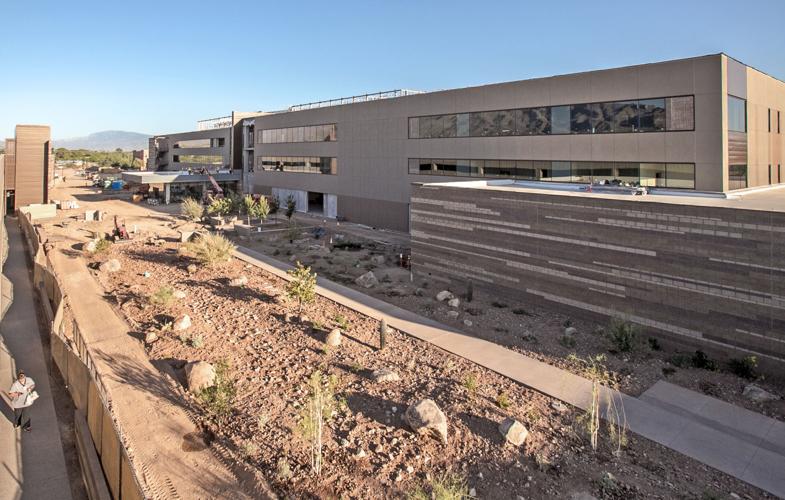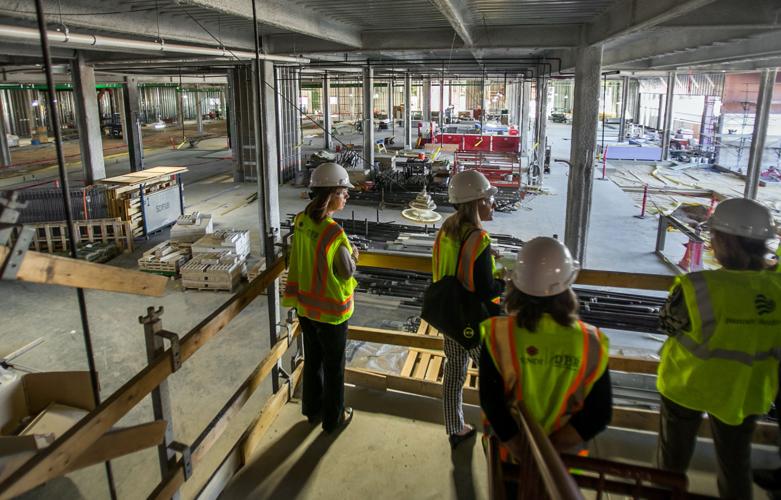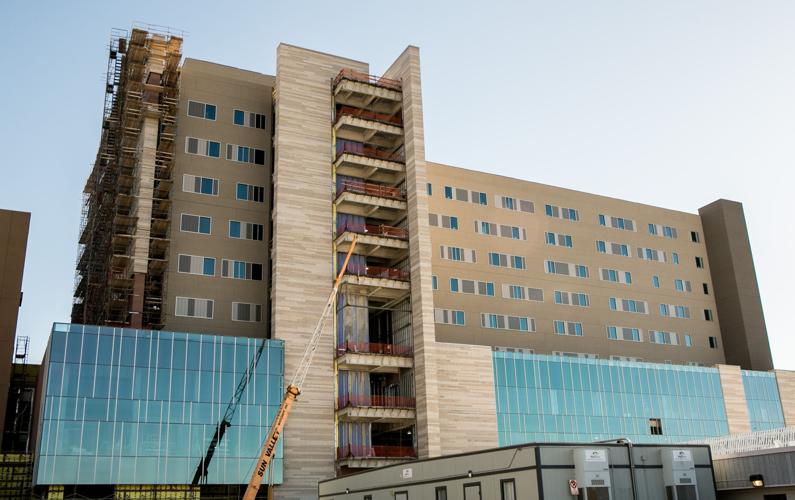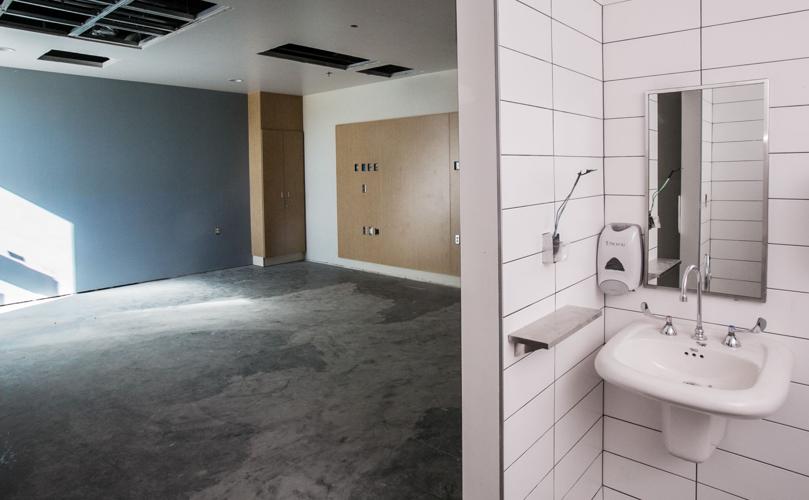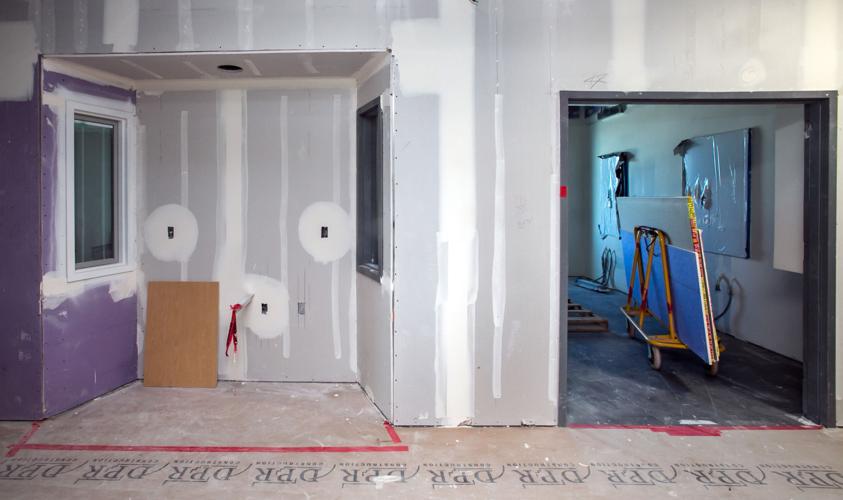Banner Health’s transition to operating two academic medical centers in Tucson has caused problems with physicians’ workloads, morale and recruitment, independent reviews have found.
Among challenges expressed by faculty in the reviews:
- Uncertainty about the future of residency programs to train new doctors;
- A compensation plan that rewards clinical work without adequate attention to academic pursuits;
- And added layers of bureaucracy under Banner that affect recruiting efforts.
The findings were contained in clinical program reviews of the University of Arizona’s departments of emergency medicine and pediatrics for the 2016-17 academic year.
Leaders from the UA and Banner Health say the results are opinions from some employees, not necessarily fact. Also, some of the issues have already been addressed, including a recently approved $1 million upgrade to the emergency department and improvements to the recruiting process.
But officials also say it’s to be expected that some physicians would be dissatisfied, given the changes that have occurred since Banner came into the local market in 2015. They say Banner has brought financial discipline and consistent structure to an institution that was losing money.
In addition, they say, health care is rapidly changing, which is creating uncertainty for providers regardless of where they’re working.
Banner Health, one of the country’s largest health systems, owns, leases or manages 28 medical centers in six states. But its foray into Tucson in 2015 marked the first time the company tried to operate an academic medical center.
The emergency medicine and pediatrics reviews, the only two UA clinical program reviews completed this year, were released to the Star through a public-records request.
The reviews examine programs that staff crucial and specialized clinical services in Tucson, two years after the February 2015 merger between the locally owned, nonprofit UA Health Network and the Phoenix-based, nonprofit Banner Health.
Opinion vs. fact
Banner Health was the surviving entity of the merger, which occurred as UA Health Network was experiencing unprecedented operating losses.
Banner now owns Banner-University Medical Center Tucson, 1501 N. Campbell Ave., and operates Banner-University Medical Center South, 2800 E. Ajo Way, through a lease agreement with Pima County.
The merger included an academic affiliation between Banner Health and both of the UA’s medical schools. The UA has two separately accredited medical schools, one in Tucson and one in Phoenix.
The merger also calls for the two Tucson hospitals to be faculty-based academic medical centers for the UA.
Academic program reviews are meant to examine, assess and strengthen programs, and Arizona Board of Regents policy says they must occur at least every seven years.
The independent review panels, UA guidelines say, are made up of a joint committee of three outside reviewers from peer institutions, two internal reviewers, a community member and a recent alumnus. The review included a site visit earlier this year. For departments, the review typically takes about a year to complete and includes a self-study.
The process is administered by the office of Gail D. Burd, the UA’s senior vice provost for academic affairs.
“The faculty is asked to speak freely, this is their perception. And I think it’s super-important that they have a venue to do that,” said Dr. Leigh Neumayer, interim senior vice president of health sciences at the UA.
“A lot of what is in the reports is absolutely verifiable and it’s true. And a lot is opinion. The purpose is not to go back and fact-check. The purpose is, are there things in here we can use that will help improve the program?”
Neumayer said the Star’s inquiry about the reviews prompted her to plan on including them in future Academic Management Council meetings of Banner and UA officials.
Neumayer co-chairs the council along with Kathy Bollinger, president of the Banner-University Medicine Division. The council is responsible for approving business plans, hiring, compensation and physician recruiting strategies for Banner’s academic enterprise, among other things.
Banner and the UA each have one block vote on the council, so they have to agree with each other before any change occurs.
“Why should I stay?”
Some junior and mid-career emergency medicine faculty members at the UA College of Medicine Tucson told reviewers they aren’t sure if the department’s vision aligns with their career goals, particularly whether they will have the support needed to pursue their academic ambitions.
“Productivity pressures are perceived as unbalanced and discourage academic commitment and growth,” the review says.
“One faculty member stated, ‘If things continue to evolve this way, why should I stay here?’”
In emergency medicine, another challenge was diversity — the department is 80 percent male and 80 percent white, the reviewers wrote, adding that when they met with faculty, the only five women present seated themselves on the edge of the group.
On the upside, they found far more diversity among residents and fellows in the department. Residents and fellows are doctors who have graduated from medical school and are in graduate training in medicine, including specialties. They take care of patients under the direction of attending physicians.
The UA’s Tucson pediatrics department, in contrast, was praised for its strides in recruiting women, as there are slightly more women than men on its faculty.
But reviewers were concerned about the future of pediatric services at Banner Diamond Children’s Medical Center due to competition from other pediatric sub-specialty services in Tucson and Phoenix, specifically from Tucson Medical Center and Phoenix Children’s Hospital.
The reviewers said they heard that since Banner took over operations, “Recruitment of nationally competitive faculty has been more difficult,” in part due to less autonomy for department chairs.
Rigor and discipline
Banner and UA officials, responding to the Star’s questions about the reports, stressed what they deemed as positives about their partnership, including facility improvements, plus structure and rigor to make sure there is enough “money at the end of the day” to fund important academic work.
The “clinical engine” needs to provide enough of a bottom line to pay for teaching and research, Bollinger said.
“If we each do what we’re supposed to do, then we’re going to be paid fairly for that,” Bollinger said. “But everybody has to do their part.”
Bollinger and Neumayer said that before the merger, department heads had almost complete autonomy to hire and large discretion over pay as well.
“We don’t want to go back to a system where it’s so autonomous that crazy stuff is going on and there’s no accountability, no discipline,” Neumayer said.
“You have to swing almost to the other side to put some process into place. ... These hospitals are better hospitals, they are safer, they are more efficient, they are more productive hospitals and they are beginning to turn around financially,” echoed Bollinger.
“These are better places as a result of the investments that have been made,” she said. “It is also absolutely a true statement that on any given day there are people that are not happy.”
As for claims in the reviews about inadequate physician compensation, Bollinger said they’re not true.
“When we arrived we were actually quite surprised to see how poorly our faculty was compensated here in Tucson,” Bollinger said.
“Within 30 days, we sent out a request for proposals to get a new academic compensation plan in place. So almost to a person, our people are better-compensated today.”
Bollinger said the company has invested $26 million into raising salaries.
“Our compensation is all benchmarked. There’s no hijacking that has gone on,” Bollinger said.
But she added that output and compensation have to match. Part of the compensation plan includes meeting target productivity goals.
Doctors, including specialists, have to earn their business and it can be difficult to build a practice, she said.
The partnership since the merger has made the medical center more attractive to many physicians, officials said. Many have hired on because, “We have a strong clinical partner,” Neumayer said. “It’s not just one, small struggling hospital anymore.”
Banner vs. UA
Of the approximately 600 faculty doctors who practice at Banner’s two Tucson hospitals, two-thirds are employed by the UA, and about one-third by Banner, though the numbers employed by Banner are increasing and the balance is shifting.
The division has created concern among some staffers in emergency medicine over a “two-class” system — a concern that is “palpable,” regardless of employer or rank, that department’s review found.
While it’s true that UA employees have UA benefits and those employed by Banner have the company’s benefits, both Bollinger and Neumayer say there is not a “two-class” system. All are part of the Banner-University Medical Group, Bollinger said.
“We have one set of rules, one compensation plan for everybody, regardless of who signs their paycheck,” she said. “Everybody is treated the same way.”
The emergency medicine reviewers wrote that people employed by Banner who have young children are at “increased risk, and potential disadvantage, with diminished childcare and health benefits,” compared with those employed by the UA.
Similarly, the pediatrics review recommends adjustments to achieve similar total compensation between Banner and UA faculty.
“The benefit structure may be a little different if you are a Banner employee versus if you are a UA employee, but I couldn’t follow that particular comment,” Bollinger said. “We have 50,000 employees and many of them have young children.”
She recalled one time when an employee missed both the deadline to enroll and an extension, so that person’s family did not have health insurance. Such stories can turn into “urban myths” about coverage, she said.
Emergency medicine
Like other academic institutions, the Banner/UA emergency medicine department faces challenges in terms of patient flow.
These include long wait times for specialty consultation services, lack of timely outpatient follow-up for patients and a lack of available on-site translation services for a large Spanish-speaking population of patients, the reviewers said.
Emergency department chair Dr. Sam Keim said the department is now including a physician in the triage process, which means the time from patient arrival to seeing a doctor is about 10 minutes. And he was confused by the comment about Spanish translators, as the department has a good system in place, he said.
Among other challenges reviewers found in the emergency medicine review: faculty members who are “overly stressed” by clinical work, residents who feel that clinical demands and pressure for rapid patient processing are negatively impacting teaching and learning, and residents who said funds for education and travel now require an increased administrative burden to obtain funds through the Banner system.
Reviewers’ recommendations included remodeling the front entry of the emergency department at the main hospital to provide adequate space for rapid medical evaluation. Keim said a $1 million upgrade was recently approved.
The reviewers were positive about Keim and department administrator Dale Borgeson and praised the department for developing strong subspecialties, including toxicology and critical care.
The department has a positive national reputation in the academic world, the reviewers said, but added that incentives for clinical scientists to pursue research are lacking.
“It would be an exaggeration to say they are not getting enough time to do research,” Keim said. “I’m not saying I don’t wish we had more protected time. But keeping 100 percent of all faculty completely, perfectly doing what they want is probably impossible and I think we’re pretty darn close.”
Keim said overall his department has high morale and low turnover. “We have no issue recruiting whatsoever,” he said.
Residency program
Uncertainty about the future of residency training at the UA “should be rectified and communicated as soon as possible,” the emergency medicine review said, as it poses “a significant recruitment and reputation threat.”
The merger agreement allows for Banner to add, but not take anything away from residency programs, for at least five years. After five years, it has leeway to evaluate and decrease the size of residencies.
“We have 1,000 residents in Phoenix and Tucson in our three academic medical centers training every single day,” Bollinger said. “I think we’ve added four residency programs since we (Banner) arrived.”
If anything is done to change the size of the programs, it would need support from both the UA and Banner, Bollinger said. “There is no way for Banner or the UA to strong-arm this.”
If there are decreases in residencies, it would be done in phase-outs, Neumayer added. “It’s not like we are going to throw residents out on the street or anything like that.”
Pediatrics
The pediatrics review was generally positive and highly complimentary of Dr. Fayez Ghishan, chair of the UA pediatrics department and physician-in-chief of Banner Diamond Children’s.
“The steadiness of his leadership has resulted in an atmosphere of collegiality and energy among faculty, trainees and staff, despite the internal and external uncertainties,” the review says.
Those uncertainties include competition for pediatric patients from other hospitals, specifically Tucson Medical Center and Phoenix Children’s Hospital, which is considerably larger than Banner Diamond Children’s.
Tucson Medical Center’s 2015 decision to sever its relationship with the academic medical center for pediatric intensivists and pediatric hospitalists “is very concerning as it poses a significant threat” to the pediatric residency program at Diamond Children’s, the review says.
The decision occurred one month after the Banner merger with UA Health Network.
The review says pediatrics faculty compensation is a problem and is not in line with national benchmarks.
“The chairs of clinical departments to whom we spoke believe that their autonomy, especially in recruitment and compensation, is less than it was,” the review says.
“The pediatric chair must have flexibility to negotiate with nationally competitive faculty candidates in real time rather than through a complex process involving Banner Health recruiters.”
Capital projects
On the positive side, the reviewers found that the affiliation with Banner Health provides opportunities for growth and said an infusion of financial support from Banner will benefit both the clinical and academic programs.
That support includes building a nearly entirely new academic medical center — a $426.7 million nine-story hospital tower at Banner-University Medical Center Tucson that is set to open in April 2019.
Banner is also building a $98 million, three-story outpatient facility on the north campus of the University of Arizona Cancer Center, 3838 N. Campbell Ave., scheduled to open in January.
The new facilities are a clear demonstration of Banner’s commitment to Tucson, Keim said. He says the hospital, including his department, is operating more efficiently post-Banner.
“When the new facility opens, it’s going to be stunning and I think morale will improve. The facility you are in matters,” Keim said.
“When physicians, nurses and staff move in, it’s going to be a really great thing. For patients, obviously, too.”


